#grand duke of tuscany
Video
youtube
JASMINE, GRAND DUKE OF TUSCANY UPDATE
0 notes
Text
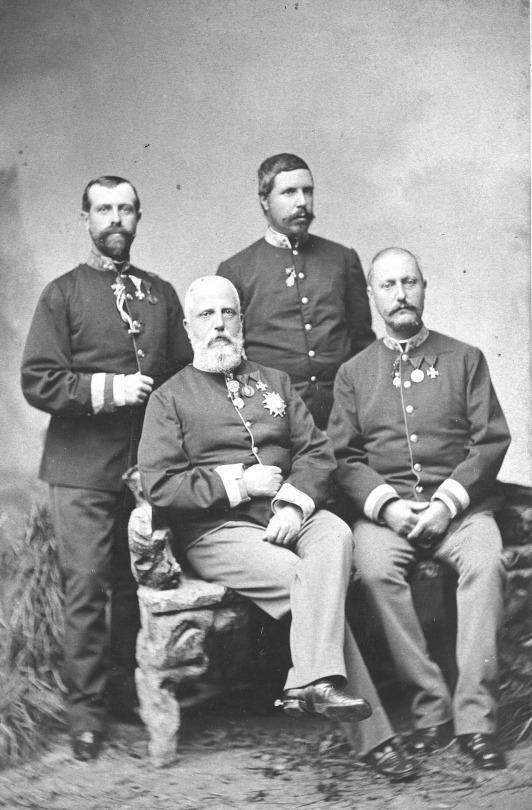
[Grand Duke] Leopold who had abdicated, a few weeks before the family fled [Tuscany], in favour of his eldest son Ferdinand, bought Schloss Schlackenwerth in Bohemia where he lived in retirement until his death in 1870, apparently making no effort to influence his children or to direct their lives. For all practical purposes Ferdinand, now in the terminology of the Almanack de Gotha a 'ci-devant regnant' was the head of the family. 'Nando', a handsome amiable man, made his headquarters in excessively uncomfortable grace and favour apartments provided by the Emperor in Salzburg, and built himself a small villa at Lindau on Lake Constance. At first he refused to renounce his claim to Tuscany, an attitude which caused the Emperor, forced after Koniggratz to improve his relations with the King of Italy, considerable embarrassment. Finally, in 1870 Ferdinand yielded and signed an act of renunciation, whereby he retained the title of Grand Duke for his lifetime but promised never to return to Italy. Having given his word he kept it, but he remained a Florentine at heart and always spoke Italian to members of his immediate family. He detested Court and appeared there as little as possible, but he got on well with Franz Joseph for he was cheerful and good tempered, never betrayed a confidence or attempted to exert influence, and shared the Emperor's passion for shooting.
Archduke Karl Salvator, Ferdinand's brother, also disliked Court life. An excellent craftsman and a first class locksmith, in Vienna his favourite amusement was to travel incognito on buses and trams, a pastime which the Emperor deprecated, but found harmlessly eccentric compared with the behaviour of the third Toskaner brother Archduke Ludwig Salvator. Ferdinand and Karl Salvator avoided Court as much as possible: Ludwig Salvator simply went away from it. Known as 'the learned Archduke' he wrote and spoke fourteen languages, and when not voyaging round the Mediterranean, spent most of his time in Majorca writing books about the geology and natural history of North Africa and the Balearic Islands. Many stories about his strange behaviour filtered back to Vienna. He was alleged to be a sun worshipper, and it was said that when in Majorca he dressed like a peasant in linen trousers and sandals, his shirt cuffs tied together with string. He appeared to have some curious companions, amongst them an exquisite young man with curly hair and a small moustache who died at the age of twenty-three, and to whom Ludwig Salvator dedicated a very large marble memorial showing his friend wearing a species of toga falling off his shoulders, leaning on one arm and gazing up at a beckoning angel. On the other hand there were also rumours that some of the crew of the Archduke's yacht, whose meals and sleeping quarters he shared, were beautiful girls in disguise. On his rare visits to the Monarchy Ludwig Salvator occasionally appeared at Ischl, where his dishevelled appearance caused some dismay. He possessed only one uniform tunic which he wore on the Emperor's birthday, and, although at times a witty and brilliant conversationalist was, with the exception of the Empress who had a penchant for eccentrics, regarded as odd by the Imperial Family.
Altogether from Franz Joseph's point of view the return of 'Die Toskaner' to the Monarchy was not an unmixed blessing. Having lost Tuscany they were short of money, their appanages had to be paid for by the State, they were an additional charge on the Family Fund, but neither Ferdinand nor his next two brothers were prepared to earn their keep by swelling the ranks of the Archdukes on ceremonial occasions. However, they did not attempt to meddle in politics and if (to the Emperor's annoyance) Ludwig Salvator failed to conform to the family rules and keep Franz Joseph informed of his whereabouts, at least he indulged in his curious, and it must be feared scandalous, behaviour outside the frontiers of the Monarchy. [Archduke] Albrecht's views on the failure of the three elder Toskaner brothers to conform to their status may be imagined, but he agreed with the Emperor that much might be expected from the youngest member of the family, Johann Salvator, the responsibility for whose upbringing had been assumed by Franz Joseph. By the time he was twenty it was evident that this young man had a great deal of talent and both the Emperor and the Archduke hoped that, under their direction, this might be canalised to the service of the dynasty.
Cassels, Lavender (1973). Clash of generations: a Habsburg family drama in the nineteenth century
#fun fact karl salvator was valerie's father-in-law#leopold ii grand duke of tuscany#ferdinand iv grand duke of tuscany#archduke karl salvator of austria-tuscany#archduke ludwig salvator of austria-tuscany#archduke johann salvator of austria-tuscany#Clash of generations: a Habsburg family drama in the nineteenth century#author: lavender cassels#house of habsburg
8 notes
·
View notes
Text
Cross-posting an essay I wrote for my Patreon since the post is free and open to the public.

Hello everyone! I hope you're relaxing as best you can this holiday season. I recently went to see Miyazaki's latest Ghibli movie, The Boy and the Heron, and I had some thoughts about it. If you're into art historical allusions and gently cranky opinions, please enjoy. I've attached a downloadable PDF in the Patreon post if you'd prefer to read it that way. Apologies for the formatting of the endnotes! Patreon's text posting does not allow for superscripts, which means all my notations are in awkward parentheses. Please note that this writing contains some mild spoilers for The Boy and the Heron.

Hayao Miyazaki’s 2023 feature animated film The Boy and the Heron reads as an extended meditation on grief and legacy. The Master of a grand tower seeks a descendant to carry on his maddening duty, balancing toy blocks of magical stone upon which the entire fabric of his little pocket of reality rests. The world’s foundations are frail and fleeting, and can pass away into the cold void of space should he neglect to maintain this task. The Master’s desire to pass the torch undergirds much of the film’s narrative.

(Isle of the Dead. Arnold Böcklin. 1880. Oil on Canvas. Kunstmuseum. Basel, Switzerland.)
Arnold Böcklin, a Swiss Symbolist(1) painter, was born on October 16 in 1827, the same year the Swiss Evangelical Reformed Church bought a plot of land in Florence from the Grand Duke of Tuscany, Leopold II, that had long been used for the burials of Protestants around Florence. It is colloquially known as The English Cemetery, so called because it was the resting place of many Anglophones and Protestants around Tuscany, and Böcklin frequented this cemetery—his workshop was adjacent and his infant daughter Maria was buried there. In 1880, he drew inspiration from the cemetery, a lone plot of Protestant land among a sea of Catholic graveyards, and began to paint what would be the first of six images entitled Isle of the Dead. An oil on canvas piece, it depicts a moody little island mausoleum crowned with a gently swaying grove of cypresses, a type of tree common in European cemeteries and some of which are referred to as arborvitae. A figure on a boat, presumably Charon, ferries a soul toward the island and away from the viewer.
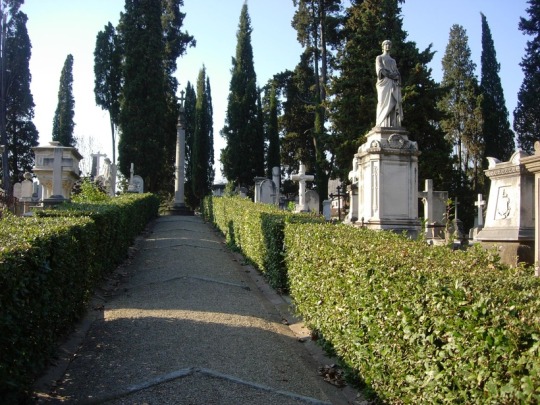
(Photo of The English Cemetery in Florence. Samuli Lintula. 2006.)
The Isle of the Dead paintings varied slightly from version to version, with figures and names added and removed to suit the needs of the time or the commissioner. The painting was glowingly referenced and remained fairly popular throughout the late 19th and early 20th centuries. The painting used to be inescapable in much of European popular culture. Professor Okulicz-Kozaryn, a philologist (someone with a deep interest in the ways language and cultural canons evolve)(2) observed that the painting, like many other works in its time, was itself iterative and became widely reiterated and referenced among its contemporaries. It became something like Romantic kitsch in the eyes of modern art critics, overwrought and excessively Byronic. I imagine Miyazaki might also resent a work of that level of manufactured ubiquity, as Miyazaki famously held Disney animated films in contempt (3). Miyazaki’s films are popularly aspirational to young animators and cartoonists, but gestures at imitation typically fall well short, often reducing Miyazaki’s weighty films to kitschy images of saccharine vibes and a lazy indulgence in a sort of empty magical domestic coziness. Being trapped in a realm of rote sentiment by an uncritical, unthoughtful viewership is its own Isle of Death.

(Still from The Boy and the Heron, 2023. Studio Ghibli.)
The Boy and the Heron follows a familiar narrative arc to many of Miyazaki’s other films: a child must journey through a magical and quietly menacing world in order to rescue their loved ones. This arc is an echo of Satsuki’s journey to find Mei in My Neighbor Totoro (1988) and Chihiro’s journey to rescue her parents Spirited Away (2001). To better understand Miyazaki’s fixation with this particular character journey, it can be instructive to watch Lev Atamanov’s 1957 animated film, The Snow Queen (4)(5), a beautifully realized take on Hans Christian Andersen’s 1844 children’s story (6)(7). Mahito’s journey continues in this tradition, as the boy travels into a painted world to rescue his new stepmother from a mysterious tower.
Throughout the film, Miyazaki visually references Isle of the Dead. Transported to a surreal world, Mahito initially awakens on a little green island with a gated mausoleum crowned with cypress trees. He is accosted by hungry pelicans before being rescued by a fisherwoman named Kiriko. After a day of catching and gutting fish, Mahito wakes up under the fisherwoman’s dining table, surrounded by kokeshi—little wooden dolls—in the shapes of the old women who run Mahito’s family’s rural household. Mahito is told they must not be touched, as the kokeshi are wards set up for his protection. There is a popular urban legend associated with the kokeshi wherein they act as stand-ins for victims of infanticide, though there seems to be very little available writing to support this legend. Still, it’s a neat little trick that Miyazaki pulls, placing a stray reference to a local legend of unverifiable provenance that persists in the popular imagination, like the effect of fairy stories passed on through oral retellings, continually remolded each new iteration.
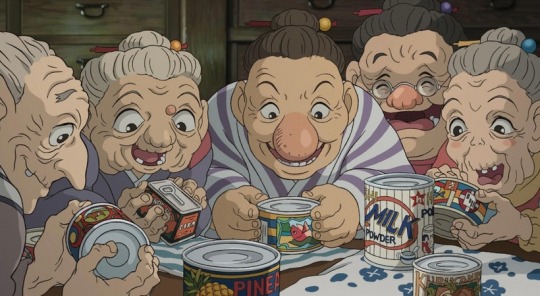
(Still from The Boy and the Heron, 2023. Studio Ghibli.)
Kiriko’s job in this strange landscape is to catch fish to nourish unborn spirits, the adorable floating warawara, before they can attempt to ascend on a journey into the world of the living. Their journey is thwarted by flocks of supernatural pelicans, who swarm the warawara and devour them. This seems to nod to the association of pelicans with death in mythologies around the world, especially in relationship to children (8). Miyazaki’s pelicans contemplate the passing of their generations as each successive generation seems to regress, their capacity to fulfill their roles steadily diminishing.
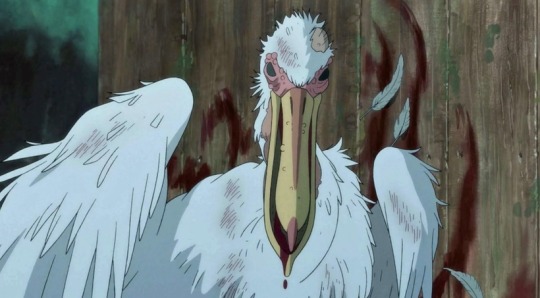
(Still from The Boy and the Heron, 2023. Studio Ghibli.)
As Mahito’s adventure continues, we find the landscapes changing away from Böcklin’s Isle of the Dead into more familiar Ghibli territories as we start to see spaces inspired by one of Studio Ghibli’s aesthetic mainstays, Naohisa Inoue and his explorations of the fantasy realms of Iblard. He might be most familiar to Ghibli enthusiasts as the background artists for the more fantastical elements of Whisper of the Heart (1995).

(Naohisa Inoue, for Iblard Jikan, 2007. Studio Ghibli.)
By the time we arrive at the climax of The Boy and the Heron, the fantasy island environment starts to resemble English takes on Italian gardens, the likes of which captivated illustrators and commercial artists of the early 20th century such as Maxfield Parrish. This appears to be a return to one of Böcklin’s later paintings, The Island of Life (1888), a somewhat tongue-in-cheek reaction to the overwhelming presence of Isle of the Dead in his life and career. The Island of Life depicts a little spot of land amid an ocean very like the one on which Isle of the Dead’s somber mausoleum is depicted, except this time the figures are lively and engaged with each other, the vegetation lush and colorful, replete with pink flowers and palm fronds.

(Island of Life. Arnold Böcklin. Oil on canvas. 1888. Kunstmuseum. Basel, Switzerland.)
In 2022, Russia’s State Hermitage Museum in Saint Petersburg acquired the sixth and final Isle of the Dead painting. In the last year of his life, Arnold Böcklin would paint this image in collaboration with his son Carlo Böcklin, himself an artist and an architect. Arnold Böcklin spent three years painting the same image three times over at the site of his infant daughter’s grave, trapped on the Isle of the Dead. By the time of his death in 1901 at age 74, Böcklin would be survived by only five of his fourteen children. That the final Isle of the Dead painting would be a collaboration between father and son seemed a little ironic considering Hayao Miyazaki’s reticence in passing on his own legacy. Like the old Master in The Boy and the Heron, Miyazaki finds himself with no true successors.
The Master of the Tower's beautiful islands of painted glass fade into nothing as Mahito, his only worthy descendant, departs to live his own life, fulfilling the thesis of Genzaburo Yoshino’s 1937 book How Do You Live?, published three years after Carlo Böcklin’s death. In evoking Yoshino and Böcklin’s works, Hayao Miyazaki’s The Boy and the Heron suggests that, like his character the Master, Miyazaki himself must make peace with the notion that he has no heirs to his legacy, and that those whom he wished to follow in his footsteps might be best served by finding their own paths.
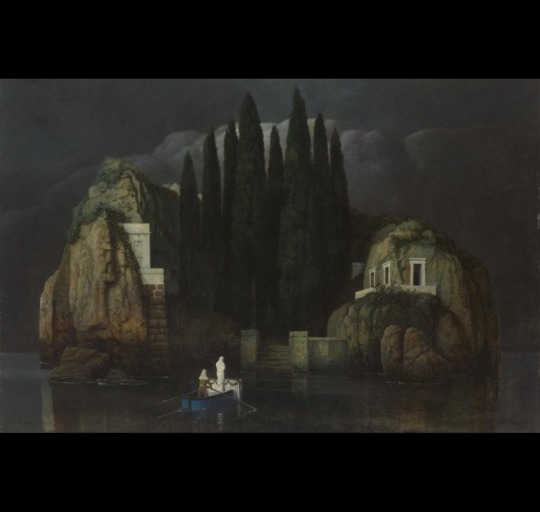
(Isle of the Dead. Arnold and Carlo Böcklin. Oil on canvas. 1901. The State Hermitage Museum. Saint Petersburg, Russia.)
INFORMAL ENDNOTES
1 - Symbolists are sort of tough to nail down. They were started as a literary movement to 1 distinguish themselves from the Decadents, but their manifesto was so vague that critics and academics fight about it to this day. The long and the short of it is that the Symbolists made generous use of a lot of metaphorical imagery in their work. They borrow a lot of icons from antiquity, echo the moody aesthetics from the Romantics, maintained an emphasis on figurative imagery more so than the Surrealists, and were only slightly more technically married to the trappings of traditionalist academic painters than Modernists and Impressionists. They're extremely vibes-forward.
2 - Okulicz-Kozaryn, Radosław. Predilection of Modernism for Variations. Ciulionis' Serenity among Different Developments of the Theme of Toteninsel. ACTA Academiae Artium Vilnensis 59. 2010. The article is incredibly cranky and very funny to read in parts. Contains a lot of observations I found to be helpful in placing Isle of the Dead within its context.
3 - "From my perspective, even if they are lightweight in nature, the more popular and common films still must be filled with a purity of emotion. There are few barriers to entry into these films-they will invite anyone in but the barriers to exit must be high and purifying. Films must also not be produced out of idle nervousness or boredom, or be used to recognise, emphasise, or amplify vulgarity. And in that context, I must say that I hate Disney's works. The barrier to both the entry and exit of Disney films is too low and too wide. To me, they show nothing but contempt for the audience." from Miyazaki's own writing in his collection of essays, Starting Point, published in 2014 from VIZ Media.
4 - You can watch the movie here in its original Russian with English closed captions here.
5 If you want to learn more about the making of Atamanoy's The Snow Queen, Animation Obsessive wrote a neat little article about it. It's a good overview, though I have to gently disagree with some of its conclusions about the irony of Miyazaki hating Disney and loving Snow Queen, which draws inspiration from Bambi. Feature film animation as we know it hadonly been around a few decades by 1957, and I find it specious, particularly as a comic artistand author, to see someone conflating an entire form with the character of its content, especially in the relative infancy of the form. But that's just one hot take. The rest of the essay is lovely.
6 - Miyazaki loves this movie. He blurbed it in a Japanese re-release of it in 2007.
7 - Julia Alekseyeva interprets Princess Mononoke as an iteration of Atamanov's The Snow Queen, arguing that San, the wolf princess, is Miyazaki's homage to Atamanoy's little robber girl character.
8 - Hart, George. The Routledge Dictionary of Egyptian Gods And Goddesses. Routledge Dictionaries. Abingdon, United Kingdom: Routledge. 2005.
#hayao miyazaki#the boy and the heron#how do you live#arnold böcklin#carlo böcklin#symbolists#symbolism#animation#the snow queen#lev atamanov#naohisa inoue#the endnotes are very very informal aksjlsksakjd#sorry to actual essayists
503 notes
·
View notes
Text

1769 Pompeo Batoni - Emperor Joseph II (right) and his younger brother Grand Duke Leopold of Tuscany, later Holy Roman Emperor Leopold II
(Kunsthistorisches Museum, Vienna)
67 notes
·
View notes
Text
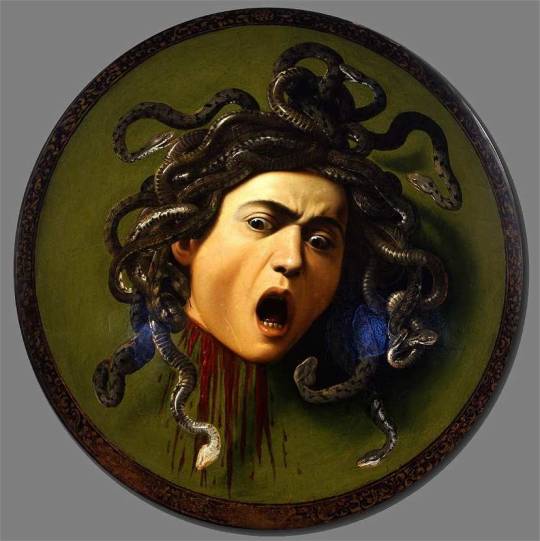
Michelangelo Merisi da Caravaggio | Medusa, 1597
Cardinal del Monte commissioned Caravaggio to paint two versions of Medusa. Both paintings were gifts to the Grand Duke of Tuscany, Ferdinando I de Medici, who presumably had a taste for all things gruesome. The second version, painted in 1597, is the most famous of the two. The reason for the commission was to rival Leonardo da Vinci’s earlier depiction of Medusa, which the Medici family once also held in their private art collection. Sadly, Da Vinci’s Medusa is lost, so we will never know exactly how Caravaggio’s version compared to that of his predecessor.
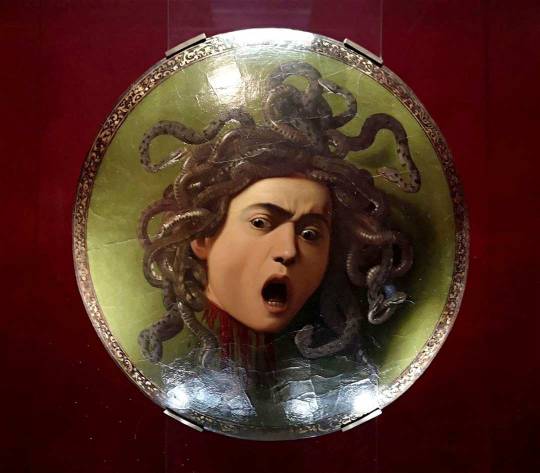
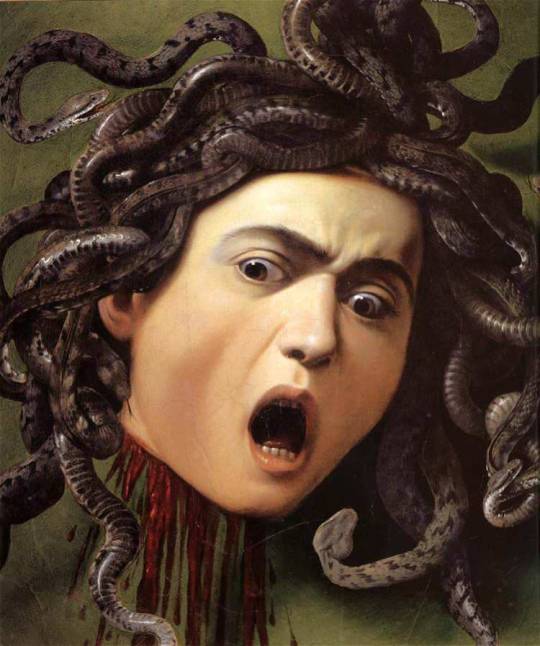
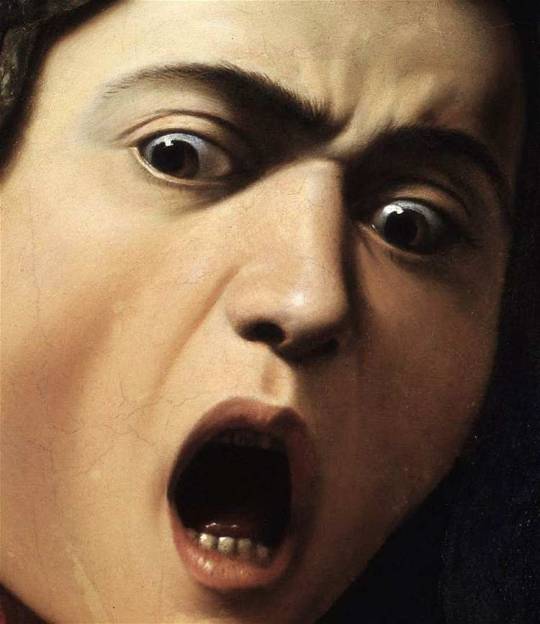
Caravaggio painted his Medusa onto a convex wooden shield, and it could still function as a working shield today! He did this for several reasons. One was simply because this was what Da Vinci had done before him, and he was imitating the design of the great Renaissance master.
Another reason ties in with the Greek mythological tale of Medusa, and the reflective shield Perseus used to help him find her without looking her in the eye. Caravaggio might also have painted Medusa onto a shield because he had heard a story about how Da Vinci once painted a shield for his father with a realistic array of snakes, lizards and monsters.
Caravaggio was quite an interesting character...
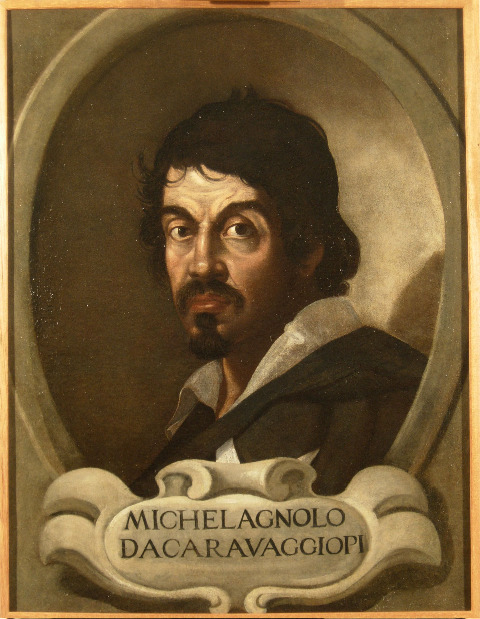
Actually he sounds like an asshole. An exhibition of documents at Rome's State Archives throws vivid light on his tumultuous life here at the end of the 16th and the beginning of the 17th centuries.
The documents provide a completely new account of his most serious brawl in May 1606 in which he killed a certain Ranuccio Tommassoni.
Some biographers have suggested that there may have been an argument over a woman, but the text of the court report suggests the quarrel broke out over a gambling debt. Caravaggio killed Ranuccio and fled the city. (details are attached to his portrait above)
Anyway... a few more paintings:

Caravaggio | The Beheading of St. John the Baptist (1608)
The highly dramatic painting, The Beheading of St. John the Baptist, still resides in the locale for which it was commissioned. Located in the Oratory of the Co-Cathedral of St. John in Valletta, Malta, this painting depicts St. John being held on the ground while blood is gushing from his neck. Salome waits nearby holding a golden platter, while another woman watches in horror as the scene plays out.

Caravaggio | The Taking of Christ "Presa di Cristo nell'orto or Cattura di Cristo", 1602
A painting, of the arrest of Jesus, commissioned by the Roman nobleman Ciriaco Mattei in 1602. Featuring seven figures, all of which fill out the majority of the composition, the painting, once again, showcases Caravaggio‘s skill in using light and dark to create a bold (and in this case, claustrophobic) work.
#art#renaissance#caravaggio#medusa#mythology#greek mythology#Michelangelo Merisi da Caravaggio#cliff clavin#john the baptist#taking of Christ#Christ#Jesus
204 notes
·
View notes
Text


Ferdinand IV, Grand Duke of Tuscany, reign: 1859-1860
Reigned for less than a year
Maximilian I, Emperor of Mexico, reign 1864-1867
Meant well and tried his best
from anon:
1. He loved plants
2. He was a sassy man
3. Had good taste
4. Learned Nahuatl
5. He’s cute (I mean, look at him)
6. He said gay rights
7. He banned child labour in Mexico
8. He gave many rights back to the indigenous people
9. Bro was wronged by the French (haven’t we all?)
10. He’s baby
11. He got executed, come on, give him this guys 🥺
from anon:
He loved to design gardens and collect insects which makes me think he would've loved playing animal crossing
From me admin2: best guy ever, he’d fight Tom Nook and win. He’s hot, kind, smart, sassy, well traveled. My man is the whole package. And chose the best country to rule! Did it go well? No…but he chose the best!
#best habsburg bracket#house of habsburg#max von mexiko#admin 2 ->#who really knows the other man? no ONE#max is fancier#better
42 notes
·
View notes
Text
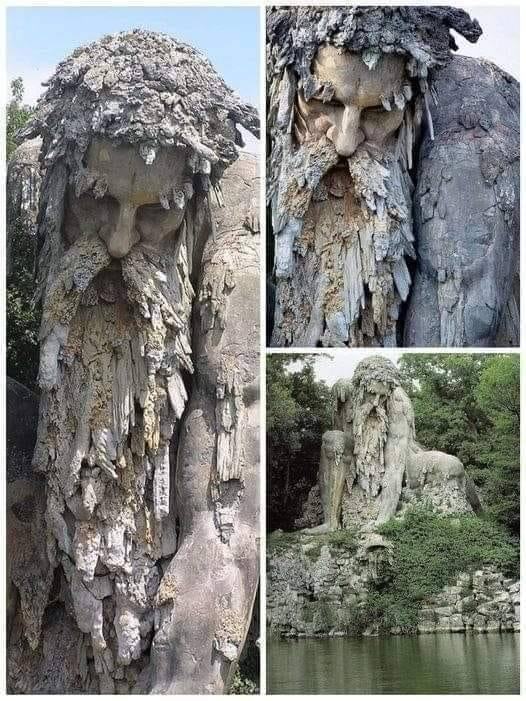
The Apennine Colossus is a stone statue, approximately 11 meters high, on the estate of the Villa Demidoff in Vaglia, Tuscany, Italy. The colossus was erected in the late 1580s by the Flemish sculptor Jean de Boulogne (known as Giambologna), as a personification of the Apennine Mountains. The site was originally part of the Villa di Pratolino estate, which was built by Bernardo Buontalenti from 1569 by order of the Grand Duke of Tuscany Francesco de Medici.
23 notes
·
View notes
Text

Louise, Crown Princess of Saxony (1870-1947) and her brother Archduke Leopold Ferdinand, Prince of Tuscany (1868–1935). They were the two eldest children of Ferdinand IV, Grand Duke of Tuscany (1835 – 1908) with his second wife Princess Alice of Parma (1849-1935).
#haus habsburg lothringen#archduchess#archduke#austria tuscany#österreich toskana#house of habsburg lorraine#italian aristocracy#granducato di toscana#regno d'italia#pornstache
26 notes
·
View notes
Text

Studio of Alessandro Allori • Portrait of Virginia de' Medici,daughter of Cosimo I de' Medici, Grand Duke of Tuscany • (1568–1615) • Private collection
A truly beautiful portrait of a well-dressed member of the Medici family. Seventeenth century fashion at its best. Nothing to snicker about; I'm chagrined.
#the resplendent outfit#portrait#medici#art#beautiful dresses in artworks#italian painter#royal portraits#studio of alessandro allori
31 notes
·
View notes
Text
joseph quinn has got that grand duke of tuscany look………. face straight out of the 18th century……. if only he grew his hair out for real he would slay absolute enlightened monarch
270 notes
·
View notes
Text
Саммеццано — красивейший замок Италии. Sammezzano is the most beautiful castle in Italy.



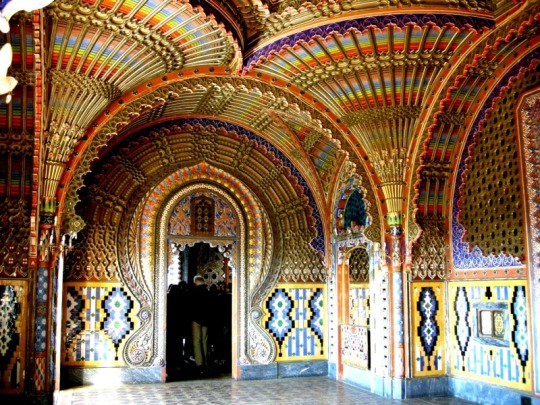
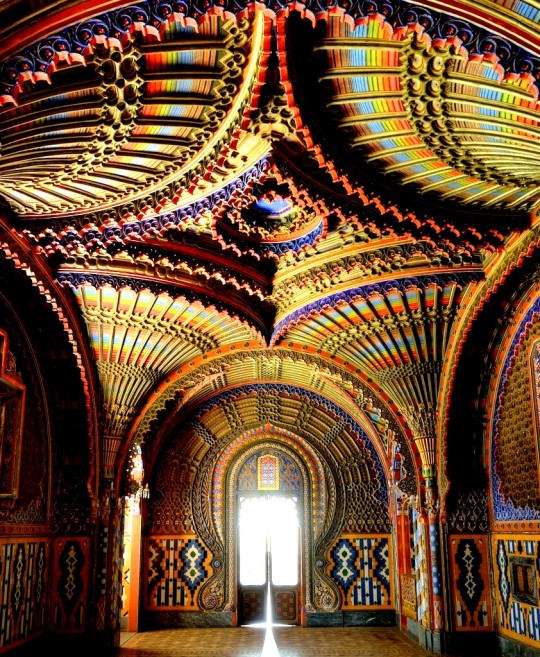


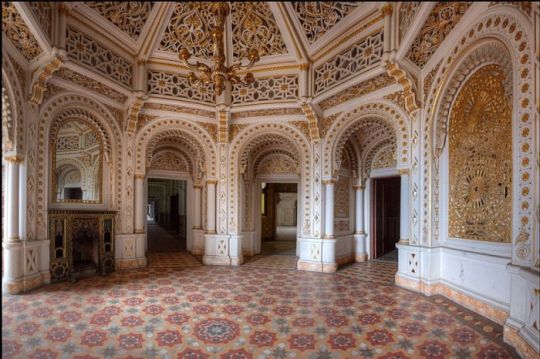
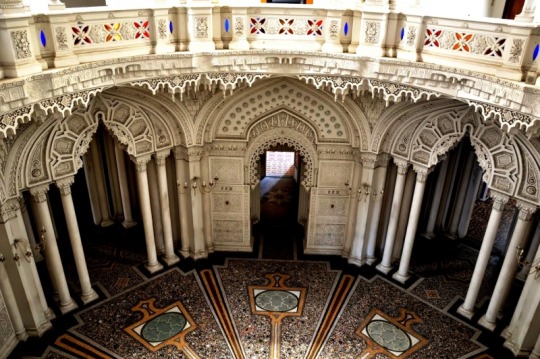



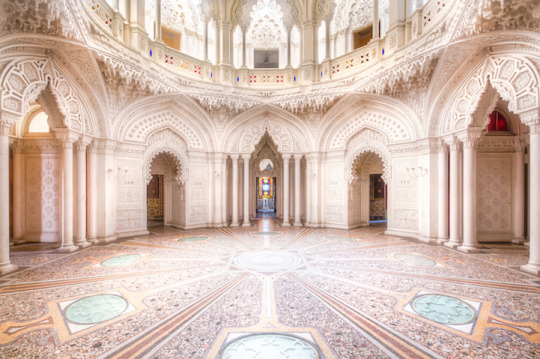
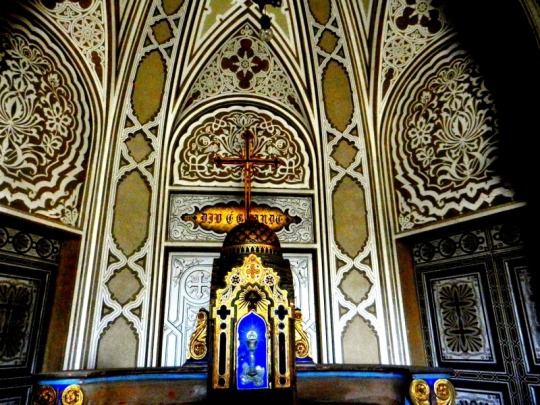



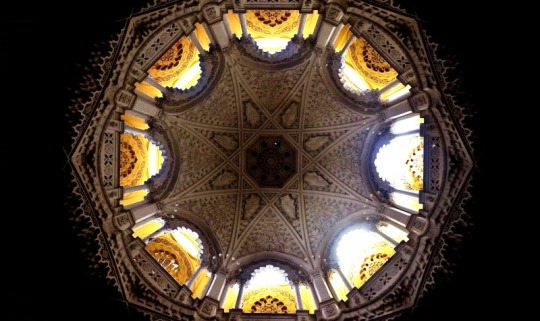
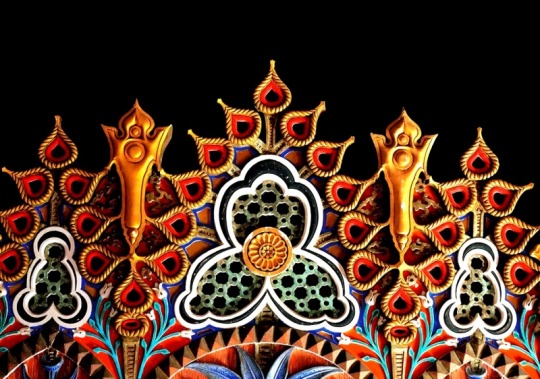

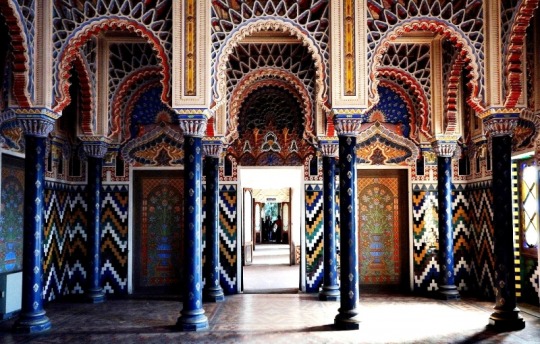

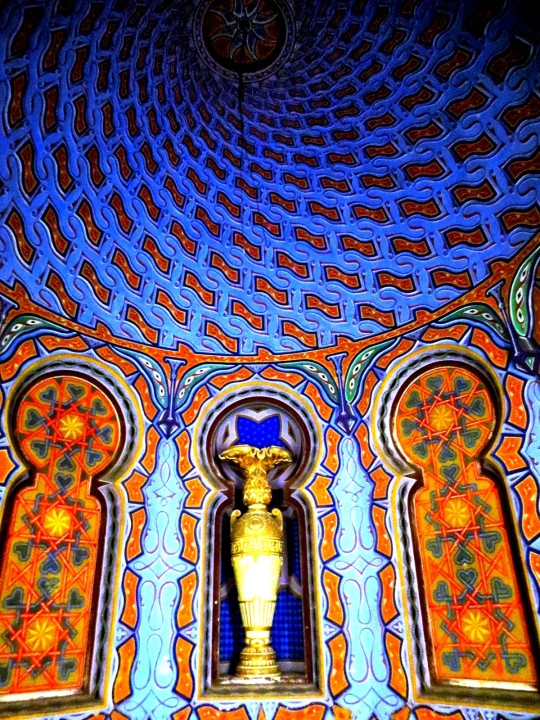



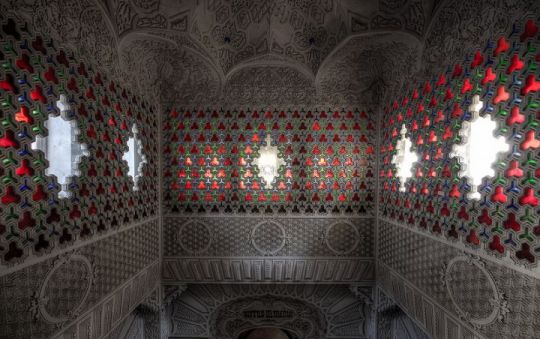
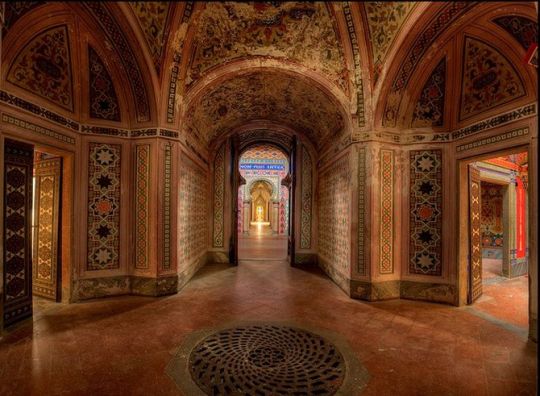


Замок Саммеццано (Castello di Sammezzano), расположенный в регионе Тоскана, на территории коммуны Реджелло, на окраине Флоренции и рядом с городком Леччио (Leccio) (Италия).Замок был построен в 780 году и за долгое своё существование принадлежал многим знатным семьям.
Имение Саммеццано до 1488 года принадлежало флорентийской семье Гуалтьеротти, затем усадьбой завладели Биндо Альтовити и Джованни де Медичи. В 1564 году великий князь Козимо I установил вето на охоту и ловлю рыбы на обширной территории, прилегающей к замку, а заем преподнес в дар имение своему сыну Фердинанду, будущему великому герцогу Тосканы.
В начале XVII века усадьба была куплена королем Хименеcом Арагонским, а затем в 1816 перешла по наследству к семье Панчиатики в 1816. Именно маркиз Фердинандо Панчиатики Хименес Арагонский между 1853 и 1889 затеял реконструкцию усадьбы в необычный и привлекательный замок, выполненный в мавританском стиле, увлеченный восточным искусством, получившим широкое распространение в Западном Средиземноморье между концом одиннадцатого пятнадцатого века.
Если фасад замка Саммеццано напоминает индийский мавзолей Тадж-Махал, то его внутренние украшения навеяны дворцом Альгамбра в Гранаде. Многочисленные и все абсолютно разные залы замка поражают роскошью отделки: среди них выделяются Павлиний зал , Зеркальный зал, зал Лилий, Белый зал и небольшая часовня, поражающие взгляд невероятным сочетанием ярких цветов. Всего замок насчитывает 365 комнат, по одной на один день года.
На сегодня, как ни прискорбно об этом говорить, роскошный замок Саммеццано продолжает пребывать в состоянии заброшенности. Формально замок находится в фазе реставрации, однако фактически работы в замке не ведутся.О нём заботятся волонтёры, и экскурсии в нём проводятся крайне редко.
Sammezzano Castle (Castello di Sammezzano), located in the Tuscany region, in the territory of the commune of Reggello, on the outskirts of Florence and near the town of Leccio (Italy). The castle was built in 780 and over its long existence belonged to many noble families. The Sammezzano estate belonged to the Florentine Gualtierotti family until 1488, then Bindo Altoviti and Giovanni de' Medici took possession of the estate. In 1564, Grand Duke Cosimo I vetoed hunting and fishing in the vast area surrounding the castle, and a loan gifted the estate to his son Ferdinand, the future Grand Duke of Tuscany.
At the beginning of the 17th century, the estate was purchased by King Jimenez of Aragon, and then in 1816 it was inherited by the Panciatici family in 1816. It was the Marquis Ferdinando Panciatici Jimenez of Aragon, between 1853 and 1889, who began the reconstruction of the estate into an unusual and attractive castle, made in the Moorish style, fascinated by the oriental an art that became widespread in the Western Mediterranean between the end of the eleventh and fifteenth centuries.
If the façade of Sammezzano Castle is reminiscent of the Indian mausoleum of the Taj Mahal, its interior decorations are inspired by the Alhambra Palace in Granada. The numerous and all completely different halls of the castle amaze with the luxury of decoration: among them, the Peacock Hall, the Hall of Mirrors, the Hall of Lilies, the White Hall and a small chapel stand out, striking the eye with an incredible combination of bright colors. In total, the castle has 365 rooms, one for each day of the year.
Today, no matter how sad it is to say, the luxurious Sammezzano Castle continues to be abandoned. Formally, the castle is in the restoration phase, but in fact no work is being carried out in the castle. Volunteers take care of it, and excursions are held extremely rarely.
Источник: http://italia-ru.com/page/zamok-sammetstsano-mavritanskii-oazis-serdtse-renessansnoi-toskany,
//tourpedia.ru/sammezzano/,
//italy4.me/toscana/castello-di-sammezzano.html,,
//zagge.ru/sammeccano-krasivejshij-zamok-italii/,
www.mirkrasiv.ru/articles/zamok-samecano-castello-di-sammezzano-toskana-italija.html/
#Италия#история#Заброшенное#заброшенные места#замок#Саммеццано#маркиз Фердинандо#экскурсии#архитектура#фотография#Italy#history#Tuscany#abandoned#Architecture#medieval#castle#Sammezzano#Marquis Ferdinando#excursions#abandonedplaces#abandonedbuilding#abandoned photography#lost in time#photography
43 notes
·
View notes
Text
Cylinder Dial


Finely decorated cylinder dial. On the surface of the column are drawn the hour lines, at the top of which are the names of the months and of the zodiac signs. The movable top section has two gnomons of different length, to be used according to the time of the year of the observation. The gnomons can be folded into the instrument.
There is a painted dedication to Francesco I de' Medici, suggesting a date of manufacture between 1574 and 1587, the years when the eldest son of Cosimo I assumed the title of Grand Duke of Tuscany.
12 notes
·
View notes
Note
Do you know about the potential marriage between Crown Prince Rudolf and Archduchess Maria Antonietta of the Tuscan branch? Read (unsure if it's accurate) how Emperor Franz Joseph I because of her tuberculosis, but reminds of Ludwig I of Bavaria initially opposing his third son Prince Luitpold marrying Archduchess Maria Antonietta's own aunt Augusta Ferdinanda who although died young, she did also bare four children who had long lives of their own.
Hello anon! This is a subject I've tried to look into, and honestly I find it equally frustrating and fascinating.


Many of Rudolf's biographers state that his first love was Archduchess Maria Antonietta, the only child of Ferdinando, last Grand Duke of Tuscany, by his first wife Princess Anna of Saxony. The story goes that they fell in love around 1878, and as you said, that she was considered a potential bride for the Crown Prince until her tuberculosis became evident. Some authors choose to end the story there, but others go even farther and talk of a secret marriage in 1880 - which would make Rudolf's marriage to Stephanie of Belgium in 1881 invalid. Maria Antonietta eventually died in 1883, at the age of 25.
But what these biographers sometimes don't mention is that in 1937 a man called Robert Pachmann claimed that he was Rudolf and Maria Antonietta's secret love child, born a month before the archduhcess' death, and that since his alleged parents had been legally married, he was the real head of the House of Habsburg and not Otto von Habsburg, Emperor Karl I's eldest son.
While before the invention of DNA tests it was very common that a person would randomly pop out claiming they were someone famous' lost child, what I find particularly interesting about this case is how FAR the Pachmanns went, going to trial several times, to the point that in 1965 Theodor Pachmann, Robert's son, was legally recognized as a Habsburg by a Vienese regional court, and again - even more explicitly - in 1976, when a judge ruled that he was a great-grandson of Franz Josef and Ferdinando of Tuscany. All these veredicts, however, were based solely on the testimony of Robert Pachmann's mother, who in 1925 stated that her son was actually Rudolf's and Maria Antonietta's. It was only in 2013 when two of Theodor's sons finally compared their DNA against a Habsburg: Georg Hohenberg, Archduke Franz Ferdinand's grandson. Which came out negative. Despite this, Robert Pachmann's descendants still claim to be descendants of Rudolf, mostly because they don't understand why Robert and Theodor would've spent so many years at court fighting for their case if it wasn't true [x].
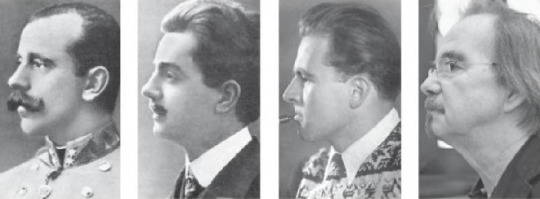
From left to right: Crown Prince Rudolf, Robert Pachmann, Theodor Pachmann and Rainer Pachmann (Theodor's son). From Alles aus Neugier: 40 Geschichten aus 40 Jahren by Georg Markus
At this point I was so down the rabbit hole that I thought, ok, there must have been some kind of rumor about Rudolf and Maria Antonietta, and Robert Pachmann built his story around that. After all, his descendants insist that there is evidence of a "love story" between them. But here is the thing: I can't find a single mention of a potential engagement or a rumored affair between Rudolf and Maria Antonietta from before Pachmann made his claim. In fact I can't even find a single mention of Rudolf and Maria Antonietta ever being in the same room together, though I assume they must have met at least once in court. Of course, just because I haven't found it doesn't mean it doesn't exist, so if any of you ever come across any sort of story (it doesn't matter if it's just rumors!) about Rudolf and Maria Antonietta from before 1937, please let me know!
#this story is actually insane imagine winning a court case based solely on your dead mother's testimony#crown prince rudolf of austria#archduchess maria antonietta of austria-tuscany#asks
11 notes
·
View notes
Photo
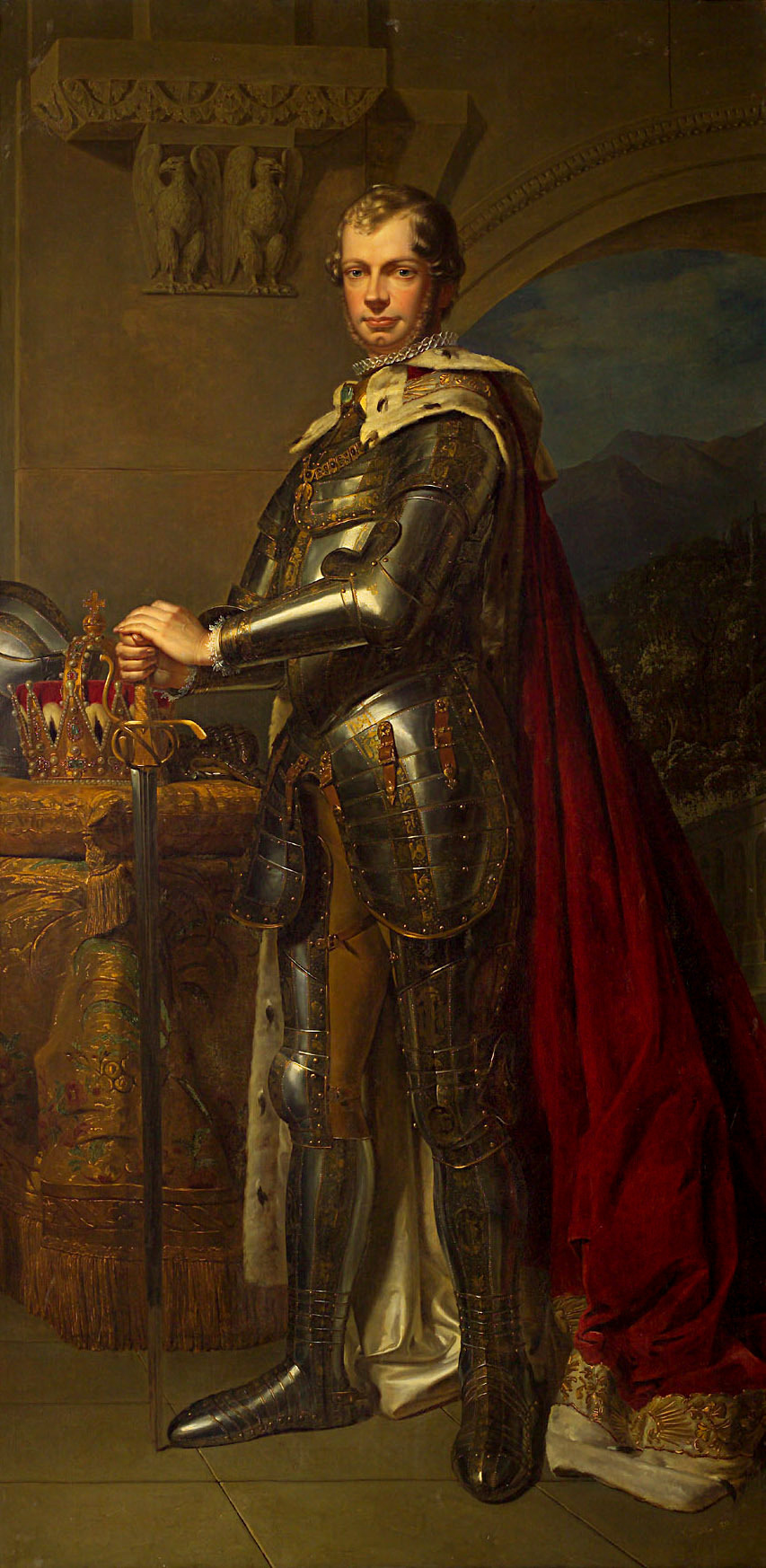
Leopold II, Grand Duke of Tuscany (1797-1870). By Ferdinand Georg Waldmüller.
#Ferdinand Georg Waldmüller#erzherzog#archduke#großherzog#gran ducato di toscana#Asburgo Lorena#granducato di toscana#asburgo lorena di toscana#austria toscana#österreich toskana#full length portrait#in armour#full-length portrait#haus habsburg lothringen#granduca di toscana#Leopoldo II di Toscana#regno d'italia#erzherzogtum österreich#Kunsthistorisches Museum
48 notes
·
View notes
Photo

1590 Scipione Pulzone - Official portrait of Francesco I, Grand Duke of Tuscany
(Uffizi Gallery)
84 notes
·
View notes
Photo
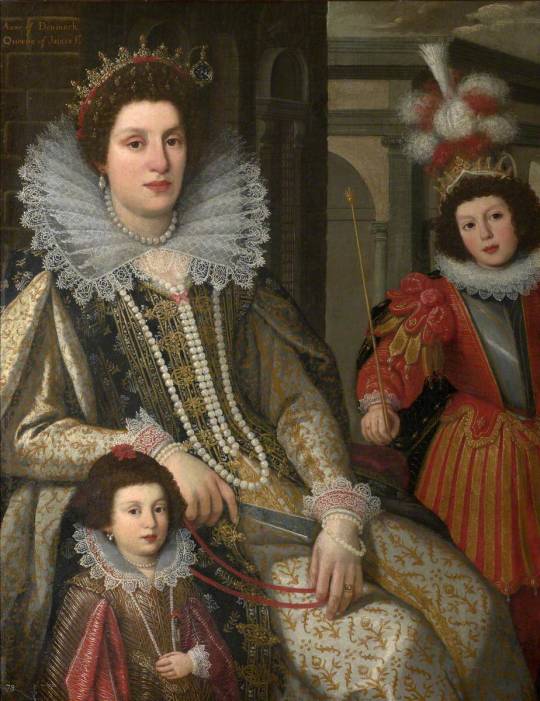
Maria Maddalena (1589–1631), Grand Duchess of Tuscany, with Her Eldest Son Grand Duke Ferdinand II (1610–1670), and Youngest Daughter Anna de' Medici (1616–1676), Later Archduchess of the Tyrol
Jacopo Ligozzi (1547–1627) (attributed to)
National Trust, Oxburgh Hall
67 notes
·
View notes